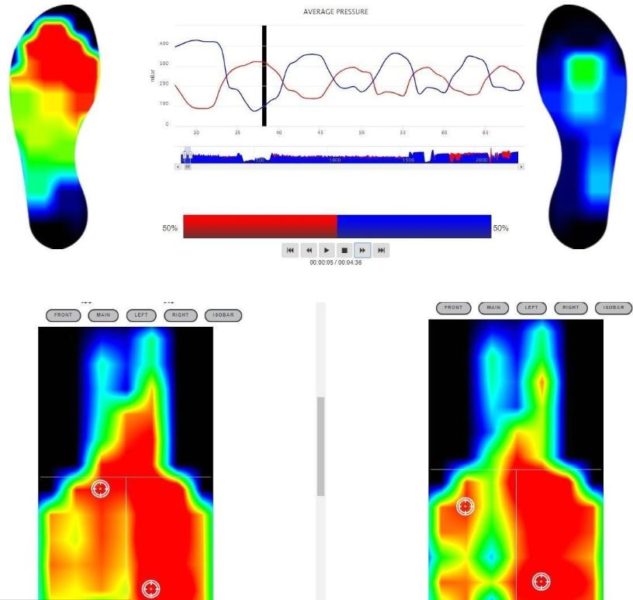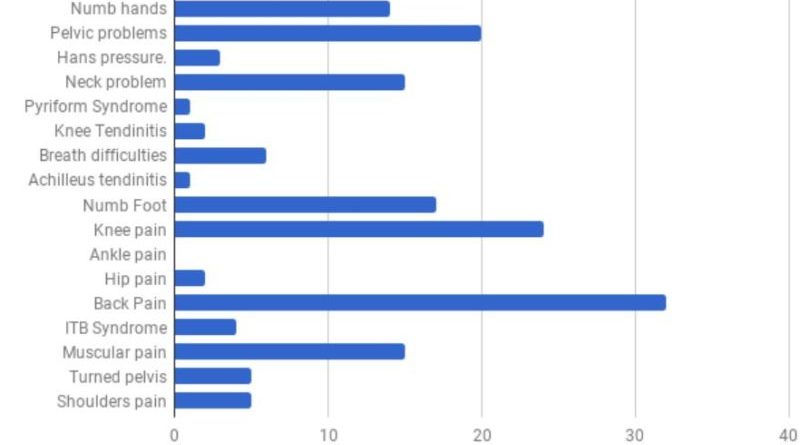Cycling pain research asks “is bike fitting always the answer for amateurs?”
Fresh research on the ailments facing casual cyclists has led bike fitting school BikeItalia to question whether the bike business is placing too much emphasis on fit alone and potentially overlooking alternatives to achieve long-term comfort improvements.
 Mapping the complaints of 200 clients the research points to an overwhelming majority complaining of back pain when cycling. The amateur only client base studied is made up mostly of Gran Fondo and marathon riders aged 40 to 50 years with an average of eight year’s cycling experience.
Mapping the complaints of 200 clients the research points to an overwhelming majority complaining of back pain when cycling. The amateur only client base studied is made up mostly of Gran Fondo and marathon riders aged 40 to 50 years with an average of eight year’s cycling experience.
Led by Omar Gatti and business partner Paolo Pinzuti, we’re told that the study was undertaken to better understand the balance between when a bike fit session is appropriate and when exercises, therapy, stretching or Pilates is the better course of action to alleviate symptoms.
Gatti, who has overseen the training of more than 1,500 people worldwide, told CI.N: “In my opinion, bike fitting systems now are too rigid and they try to apply a standard approach on bike positioning, using something like “perfect biophysical criteria” and trying to push all cyclists in that direction. Mostly this criteria suits the professionals, but doesn’t adapt well on amateur cyclists.”
In order of complaint, back pain is by far the most common, with various knee problems, pelvic complaints, numb feet, neck problems and muscular pain making up the top six.

Rarely is the root cause straightforward; Gatti notes that back pain often stems causes unrelated to bike use and that perhaps other treatments may be appropriate alongside geometry and component tweaks.
“The second most common pain is knee pain. That is a very vague concept, because it could represent patellofemural pain, ITB syndrome, medial pain, or hamstring imbalance. Saddle soreness is the third most common problem suffered by cyclists,” says Gatti.
Using his research as a foundation, Gatti echoes the call for the bike fitting world and medical professionals to work in closer unity to find the sweetspot between pain and posture for amateur cyclists.

“Pain is a big issue in cycling and, in our experience, could originate from thousand of causes and, most of all, every human deals with pain in an individual approach,” says Gatti. “If the bike fitting industry starts to talk with health professionals (like trainers, physiotherapists, podologists and kinesiologists), we could better develop flexible systems. These could find the right correlation between pain and posture on the bike. For example, no one bikefitting system seems to evaluates pelvic movement in depth. This is the most important issue when back pain appears (we use inertial sensor to evaluate it), or they don’t analyse pressure on saddle, or in shoes. This is a mistake, because discomfort in one contact point leads to less functional movement patterns. In turn, that opens the door to pain. We use pressure systems on saddle and in shoe to evaluate pressure distribution.”
Given the skillset called for in this instance, is this a job for the everyday bike shop? Gatti’s unconvinced.
“This type of job could be not be done by bike mechanics, or bike dealers, but by professionals with an academic degree and a specific education on bike-human interface,” he concludes.
For more research on the bike fitting segment, including the most common prices charged, add on sale items sold, investment in training and plenty more, check in with Jon Iriberri’s CI.N column here.



